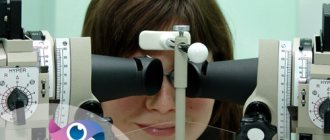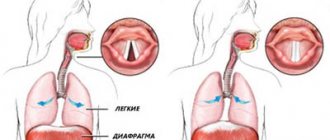Hand trembling in older people usually does not cause much surprise; we most often attribute this disorder to age-related changes. However, involuntary and uncontrollable shaking movements of the limbs (doctors call this tremor) worry not only the elderly: the palms of a baby, a teenager, and a mature person can shake. Let's try to figure out what hand tremor is, why it happens, and what treatment helps with this condition.
Why do young and old hands shake?
Why your hands shake: reasons
Tremor refers to an involuntary oscillatory movement (shaking) caused by muscle contraction. Trembling can be short-term and constant, and the amplitude of movements can also differ - from barely noticeable to very frequent and sweeping.
Tremor can affect different parts of the body: when seeking medical help, some patients complain of trembling in the limbs, others have a shaking head, and in others the whole body. Trembling can be observed on one side (tremor of one hand) or be symmetrical. In this article we will take a closer look at such a condition as tremor in the hands.
Experts distinguish between physiological and pathological tremor.
- In the first case, we are talking about a functional disorder (primary tremor), not associated with any disease - as a rule, such a disorder is temporary and does not require special treatment.
- Pathological (secondary) tremor is a symptom, consequence and/or complication of a certain disease.
Diseases that cause trembling of the limbs
There are various diseases, the presence of which can lead to tremor. Among them are:
- Endocrine pathology: hyperparathyroidism, thyrotoxicosis, pheochromocytoma, hypoglycemia;
- Strokes of various origins;
- Infectious diseases: encephalitis, neurosyphilis;
- Metabolic disorders: Wilson-Konovalov, Hallervorden-Spatz disease;
- Tumors: angiomas, cancer, hematomas;
- Polyneuropathy of various origins.
- Neurological pathology: multiple sclerosis, encephalopathy, cerebral palsy, Alzheimer's disease, Parkinson's disease, Pick's disease, Huntington's chorea, cerebellar degeneration.
In most cases, tremor is a symptom of Parkinson's disease. There is an opinion that this is a problem for older people (previously this was considered the norm). But essential tremor (also called “hereditary”) now occurs in young people, and the proportion of such cases reaches 20%.
Physiological (benign) tremor
- Excitement, fear and anxiety are a fairly common explanation for why arms and legs shake. This state is well known to emotional people who are intensely experiencing certain events and who take everything that happens around them to heart. In such situations, people say “the ankles are shaking,” implying feelings of strong excitement. Once a person calms down, the tremor disappears on its own.
- Prolonged physical stress is another cause of involuntary trembling of the limbs. Professional athletes, people whose profession involves strenuous work with small objects (jewelers, watchmakers, surgeons), as well as loaders - it is not uncommon for them to experience muscle trembling under tension.
Why do young and old hands shake?
- Trembling limbs in infants is often due to the fact that their nervous system is not fully formed. Temporary tremor occurs under the influence of various stimuli: for example, the child is hungry, scared, does not want to bathe, change clothes, etc., and against the background of all this, rhythmic muscle contraction can be observed. Of course, parents need to ensure that the baby is monitored by a specialist to make sure that the baby’s development is progressing normally (tremors are often observed in the first months of a child’s life in cases where there was a difficult pregnancy and/or birth injuries).
- Hand trembling at a young age can be associated not only with anxiety (for example, during exams), physical overexertion during sports training, but even with ordinary hypothermia. The latter sometimes leads to involuntary muscle contraction, resulting in shaking hands. Another reason for shaking hands in teenagers is hormonal imbalances.
- People who abuse alcoholic beverages and also take various stimulants (drugs, tranquilizers) deserve special attention. Why are their hands shaking? Alcohol and drugs overstimulate nerve cells (resulting in uncontrolled muscle contraction), which can lead to damage to the nervous system and brain.
Alcohol addiction is one of the reasons why hands shake
It should be noted that temporary trembling of the hands can be a consequence of the effects of tonic drinks (strong tea, coffee), as well as medications. Before taking any medicine, you need to carefully study the instructions - tremor may be indicated in the side effects section (some chemical compounds, affecting the psychoneurological sphere, cause undesirable consequences).
If trembling of the limbs is a functional disorder, it is enough to eliminate the provoking factor, and the unpleasant phenomenon will go away on its own. For example, in case of alcohol poisoning, it is necessary to detoxify the body, and hand tremors will disappear (provided that at this stage brain damage has not yet occurred and toxic polyneuropathy has not developed). If the tremor bothers you for a long time (more than two weeks), you need to undergo an examination.
Physiological (normal) tremor
Doctors also call normal tremor physiological. This type of tremors is common among a large number of healthy people. It is worth noting that with physiological tremor, usually only the hands shake, but these twitchings do not last long and go away on their own.
There are several reasons for the appearance of normal tremor. The most common reason is probably physical fatigue. After excessive physical exertion, shaking hands may be accompanied by trembling knees, etc. An equally common cause of normal tremor is stress. Hysteria, excessive anxiety, depression and other conditions that increase the excitability of the central nervous system can lead to trembling in the legs, arms and even the whole body.
There is also the concept of familial or juvenile tremor. It is worth noting that in this case, trembling may begin against the background of complete calm. At the same time, doctors note that one hand may begin to shake, and then the trembling may gradually move to the other, go to the legs or head. Typically, juvenile tremor does not require treatment, but in some cases, patients may be prescribed specialized anticonvulsant medications.
Doctors say it usually takes one to two weeks to determine the cause of hand tremors. In cases where the trembling is not associated with stress or physical fatigue, the tremor is most likely pathological.
Pathological tremor: causes
Pathological trembling of the limbs is usually associated with various deviations of the nervous system (disruption of the activity of various parts of the peripheral and central nervous system). Hand tremors in this case are a symptom of a serious systemic disease. Most often, prolonged trembling of the limbs is associated with the following pathologies:
- Parkinson's disease. Tremor occurs as a result of damage to the subcortical structures of the brain. Feature - trembling increases during periods of rest and decreases when performing any actions. Often the tremors are asymmetrical in nature (there is less tremors on one side and less tremors on the other).
Incurable neurological disease - Parkinson's disease
- Multiple sclerosis. Another disease in which the hands shake (with multiple sclerosis, the upper limbs most often tremble).
- Damage to the cerebellum. The causes of damage (changes in the cerebellum) are most often poisoning and traumatic brain injury. Feature – trembling intensifies with active and purposeful movements.
- Diseases of the endocrine system. Hand trembling is a fairly common symptom in people with endocrine disorders. Tremors often occur due to an excess of thyroid hormones. Along with this symptom, patients complain of weakness, increased sweating and irritability.
- Alzheimer's disease (hand tremors are one of the symptoms of the disease).
- High or low blood pressure.
- Cervical osteochondrosis. This disease leads to impaired blood supply to the brain, which can cause neurological pathologies.
Degenerative changes in the cervical spine
- Encephalitis (after a bite by an encephalitis tick, convulsive trembling of the hands usually appears).
- Hypoglycemia (a decrease in blood glucose levels increases the activity of the sympathoadrenal system, and, as a result, tremors appear in the hands).
- Poisoning – food, chemical, medicinal. When poisoning occurs, the body becomes intoxicated. Due to toxins, normal motor activity is disrupted, which can result in tremors.
A special type of pathology is essential tremor. As a rule, this is a hereditary disease that is not associated with disorders of other systems. A person complains of periodic trembling of the limbs (most often of both hands), sometimes this manifests itself when writing (writer's cramp). The first symptoms of the disease usually appear after 45 years of age.
Antidepressants as a treatment for tremors
Antidepressants are strictly prescription drugs. Uncontrolled use can cause a number of other problems, so it is important not only to get a prescription for the drug, but also to regularly visit your doctor to assess the dynamics of the condition and its control.
Such medications are used when a person has experienced an irreparable event that has greatly changed their life. Often the mental state is disturbed after the death of someone close, revealed betrayal, or as a result of loss of housing. Emotional people find it difficult to cope with stress, which is why they develop various mental disorders due to their experiences. Antidepressants help a person cope with stress and restore a normal lifestyle. Often these medications are taken simultaneously with a visit to a psychotherapist.
Conventionally, all antidepressants can be divided into two groups:
- Medicines that help cope with hyperactivity, normalize sleep and relieve obsessive anxiety.
- Medicines that help get rid of apathy and restore interest in life.
Due to the fact that hand tremors are predominantly a problem of high excitability and nervous condition, medications from the first group of antidepressants are most often prescribed to get rid of it.
Diagnosis of tremor
If you experience tremors in your hands, you should first consult a therapist. In the future, you may need the help of a neurologist, psychologist, toxicologist, endocrinologist and/or other specialists.
When diagnosing, the doctor focuses on the patient’s complaints. An external examination and functional tests are carried out (the patient is asked to stretch his arms forward, write something, the sensitivity of different parts of the body is checked, gait is assessed, etc.). Additionally, laboratory tests may be prescribed (if endocrine diseases are suspected), as well as MRI and/or CT scan of the brain.
Diagnostics
The cause of hand tremors can be identified based on the results of a comprehensive examination. At the initial stage, a neurologist correlates clinical symptoms with diagnostic criteria and makes a preliminary conclusion, but it is almost impossible to determine the source of disorders without additional research. For trembling hyperkinesis, the following procedures are recommended:
- Laboratory tests.
To exclude endocrine diseases, a spectrum of hormones (thyroid, corticosteroids, insulin) is examined. In a biochemical blood test, renal tests (urea, creatinine), acute phase indicators, and ceruloplasmin concentration are assessed. Toxicological examination helps to identify harmful substances; in case of neuroinfections, serological diagnostics and cerebrospinal fluid analysis are performed. - Tomography.
Signs of focal or diffuse damage to the central nervous system are an indication for performing a CT or MRI of the brain. Neuroimaging methods are used to diagnose tumors, hematomas, and strokes. In hereditary diseases, cerebellar atrophy and demyelination of the white matter are determined. PET-CT indicates the localization of functional disorders. Vascular involvement is confirmed by MR angiography. - Tremorography.
To assess the activity of antagonist muscles, tremorography with accelerometric or electromyographic recording methods is used. According to EMG data, the frequency and pattern of contractions, the influence of cognitive load are determined, and the presence of a central oscillator is assumed. A neuromuscular conduction block indicates the presence of neuropathy.
Some authors propose to study the time-frequency properties of EEG signals to diagnose the early stages of Parkinson's disease. In case of endocrine pathology, ultrasound of the thyroid gland and adrenal glands is prescribed; displacement of the midline structures during volumetric processes can be seen using echoencephalography. The doctor has to differentiate between various diseases accompanied by tremor, and distinguish it from other hyperkinesis.
Types of tremor
Different diseases have their own characteristic signs, and in order to figure out why your hands are shaking, the doctor clarifies how exactly the pathology manifests itself. Thus, a distinction is made between resting tremor and action tremor.
In the first case, involuntary movements occur when a person does not do any active actions (just sits, stands, lies). In the second case, the opposite is true: during rest there is no trembling, but as soon as a person wants to do something (pick it up, put it down, etc.), uncontrolled muscle contractions begin.
In addition, doctors distinguish between several types of tremor depending on the source of the disorder. For example, if tremors are associated with damage to the cerebellum, they speak of cerebellar tremor; if nerve fibers are damaged, neuropathic tremor is diagnosed. One of the most difficult cases is damage to the midbrain (rubal tremor). If your medical record says “dystonic tremor,” then the problem is related to disturbances in the functioning of the muscular system.
Cerebellum
Tremor degrees
Determination of the degree of tremor is required to establish the severity of the disease. Based on this criterion, the need to prescribe one or another therapy is judged. Tremor is divided into:
- Minor. Rare attacks that recur at regular intervals. The symptom does not affect the patient's quality of life.
- Moderate. Tremor prevents small movements. In this regard, the quality of life and ability to work decreases.
- Significant. A pronounced pathological symptom is the cause of disability. The patient cannot care for himself due to lack of control over movements.
Hand tremors - treatment
As mentioned above, physiological tremor is reversible and usually does not require special treatment. It is necessary to understand what factor caused the undesirable reaction and eliminate it. As a rule, it is enough to avoid stressful situations, give up frequent consumption of strong coffee and tea, establish normal, full sleep, reduce the intensity of physical activity, and the trembling in the limbs will go away.
As a preventive measure, the patient may be shown a special course of exercises. Activities that promote the development of fine motor skills (knitting, embroidery, drawing, weaving, exercise with an expander, etc.) can be useful. Exercises with weights (you need to pick up something heavy) can help relieve trembling. A simple and effective exercise that anyone can do: clench your hands into a fist and unclench with a sharp movement, repeat 30-50 times.
If the tremor is pathological in nature, the underlying disease must be treated.
- For example, for essential tremor, drug therapy is usually prescribed. Patients are prescribed beta-adrenergic receptor blockers, vitamins, tranquilizers, as well as anticonvulsants and antiepileptic drugs. In some cases, when tremor leads to significant disturbances in activity and discomfort, and medications do not help, the patient may be indicated for surgical intervention, namely, implantation of electrodes in the area of the brain responsible for sensory stimulation.
- For tremors associated with chronic alcohol abuse and, accordingly, alcohol poisoning, you need to fight the addiction itself, and the tremors will go away. However, if you suddenly stop drinking alcohol, a person experiences a so-called withdrawal syndrome, during which their hands begin to shake even more. To alleviate the condition and remove unpleasant symptoms, drug treatment is used: the patient is prescribed calcium antagonists, beta blockers, tranquilizers and other medications.
- With cervical osteochondrosis, physical exercise and massage, which improve blood flow, help.
- In Parkinson's disease, which is still incurable (the disease gradually progresses), in addition to drug therapy, strength exercises are used (treatment in each case is selected taking into account the characteristics of the form of the disease).
There is no need to be embarrassed or ignore the problem if your hands are shaking. It is necessary to figure out what the violation is related to as soon as possible. In most cases, the pathology can be eliminated completely or to such an extent that it does not cause discomfort.
Treatment
If the cause that underlies the disease is removable, treatment of tremor begins with this. Then conservative therapy comes into play, which includes:
- Improving quality of life by changing habits and environment. Patients need to avoid stress and also surround themselves with more comfortable and safe things. For example, knives should have dull edges so that a person cannot hurt himself. If a person is often left alone at home, an emergency phone should have voice control.
- Exercise therapy, massages, and additional treatment options such as reflexology. Also, many patients are recommended to use special braces that are attached to the wrists and make movements more rigid and limited.
- The use of various medications, which are selected exclusively by a doctor after a thorough diagnosis. Under no circumstances should you prescribe something for yourself.
If conservative methods do not help, patients are offered surgical intervention. This is relevant in the case when tremor can make a person disabled. Then, during the operation, special electrodes are implanted into the body - by influencing the brain with special impulses, they help to align movements.
If you want to cure hand tremors or get detailed advice on this issue, neurologists at the Meditsina JSC clinic in Moscow are ready to see you at a convenient time and provide professional assistance.
Treatment methods
With cerebellar tremor, it is recommended to load the affected limb with weight, and medications will not help in this situation.
Physiological tremor, which does not cause concern, does not require treatment, you just need to avoid the supposed pathogens (caffeine, alcohol, anxiety). In case of inconvenience and the need for treatment, the use of propranolol in a dose of 20 to 80 mg 4 times a day will be effective.
Essential tremor can be treated with the same medications that can be used for irritating physiological tremor; another option is to take a small amount of alcohol, but this method is used occasionally due to the risk of abuse.
Parkinson's disease is treatable, and levodopa (a metabolic precursor of dopamine) is a drug that combats this disease.
Thus, drug treatment is widely used for types of hand tremor other than cerebellar, and physiological tremor in most cases will be stopped by consultation with a neurologist.
The Kuntsevo Treatment and Rehabilitation Center uses SMT therapy, also known as electrotherapy, which affects the nervous system and muscles. All treatment procedures are carried out by experienced specialists, and the technical equipment meets international quality standards.
The following procedures will help solve problems with the nervous system: drug therapy, manual therapy, massage, acupuncture, electropuncture, laser treatment, ultrasound therapy.
Causes
Almost every person has experienced finger trembling. This phenomenon can occur during severe anxiety or fear. With strong emotional outbursts, adrenaline is released into the blood, which results in finger trembling. Finger tremor can also be observed in a calm state, during physical overexertion, or during prolonged stress. These signs refer to the physiological type of tremor, which is also called normal or benign.
The main causes of physiological tremor are:
- any stressful situation, emotional outbursts;
- consumption of caffeine in large quantities (tea, coffee, chocolate);
- active smoking;
- hypothermia;
- muscle overstrain due to physical activity;
- high blood pressure;
- elderly age;
- increased doses of alcohol;
- taking certain medications.
Physiological tremor of the fingers usually does not cause discomfort in a person and disappears when the cause of its occurrence is eliminated. If tremor persists for more than two weeks, you should consult a neurologist.
Tremor that is permanent is called pathological and requires mandatory consultation with a neurologist. At the Yusupov Hospital, professional neurologists will conduct high-quality diagnostics and prescribe effective treatment.
Identifying the cause of pathological tremor of the fingers is not always easy. The causes of this symptom may be:
- osteochondrosis of the cervical spine;
- liver and kidney diseases;
- vascular diseases;
- hereditary predisposition;
- Parkinson's disease;
- lesions of the cerebellum or brain stem.
The presence of tremor of the left thumb or any other finger is a reason to visit a doctor. It is necessary to determine the type of tremor, the cause of its occurrence and development. To do this, a detailed diagnosis of the patient’s body is carried out. At the Yusupov Hospital, patients are examined using the best modern equipment. Tremors are classified:
- by frequency of oscillatory movements (slow and fast);
- depending on the location (tremor of the head, arms, legs, fingers, tongue);
- by the nature of movements;
- depending on the conditions in which it occurs (static, mixed, dynamic, postural);
- depending on the causes.
After conducting a detailed diagnosis, which includes examining the patient, checking tremor with a tremograph, MRI, ultrasound, collecting tests, the doctor determines the treatment algorithm.
Leg tremors
Leg tremors are usually a nonspecific pathology that leads to serious disorders in humans. This symptom becomes the first signal about the possible presence of a disease and requires a thorough diagnosis and consultation with a doctor.
If, after a detailed diagnosis, pathological abnormalities are discovered, then long-term and high-quality treatment is required. Treatment of leg tremor with a pathological deviation requires increased responsibility, namely:
- in mild forms of the disease, the patient is advised not to be in uncomfortable positions, the presence of objects near the body is undesirable, and things should not be squeezed tightly when grasping.
- small doses of alcohol can help eliminate shaking. But you should not overdo it, since alcohol in large doses, on the contrary, will increase the tremor.
- if the disease interferes with a person’s everyday life and normal pace of life, medications are prescribed, namely beta blockers. They reduce the amplitude of trembling of the arms and legs, and sometimes completely eliminate this symptom.
- Surgery is done only in extreme cases when tremors interfere with a person’s normal functioning. (For example, the patient cannot eat on his own.) The operation is performed by stimulating the cerebellum with electric current.
Previously, it was impossible to get rid of pathological tremor. But now, thanks to modern medicine and medications, it is possible to significantly reduce tremor and improve the patient’s standard of living. You can make an appointment with a neurologist by calling the Yusupov Hospital.








